Verakol 1g of sol. 3.5 ml of a 1% solution of lidocaine 1’s powder for solution for injection
$15.30
Description
The instruction for medical use of Verakol Torgovoye medicine a name Verakol Mezhdunarodnoye the unlicensed name Tseftriakson Lekarstvennaya a form Powder for preparation of solution for injections, 1 g, complete with solvent (1% hydrochloride lidocaine solution for injections, 3.5 ml). The structure One bottle contains active agent – a tseftriakson of sodium of 1193.00 mg (it is equivalent to a tseftriakson of 1000.00 mg). One ampoule with solvent contains active agent – hydrochloride lidocaine monohydrate of 37.30 mg (it is equivalent to lidocaine to a hydrochloride of 35.00 mg), excipient – water for injections to 3.5 ml. Description Drug: powder, white or white with a yellowish shade, with a characteristic smell. Solvent: Colourless, transparent liquid Pharmacotherapeutic group Antibacterial drugs for system use. Beta laktamny antibacterial drugs other. Cephalosporins of the third generation. Tseftriakson. The ATX J01DD04 code the Pharmacological Pharmacokinetics Pharmacokinetics properties of a tseftriakson has nonlinear character. All key pharmacokinetic parameters based on the general concentration of drug except for elimination half-life, depend on a dose and increase less than in proportion to its increase. Nonlinearity is characteristic of the pharmacokinetic parameters depending on the general concentration of a tseftriakson in blood plasma (not only a free tseftriakson) and is explained by saturation of linking of drug with proteins of blood plasma. Absorption After intravenous bolyusny administration of 500 mg and 1 g of a tseftriakson the average maximum concentration in blood plasma made 120 mg/l and 200 mg/l, respectively. After intravenous infusion of 500 mg, 1 g and 2 g of a tseftriakson the concentration of drug in blood plasma made about 80, 150 and 250 mg/l, respectively. After an intramuscular injection of value of average maximum concentration of a tseftriakson in blood plasma is approximately twice lower, than after intravenous administration of an equivalent dose of drug. The maximum concentration in plasma after single intramuscular introduction of 1 g of drug makes about 81 mg/l and is reached within 2-3 hours after introduction. The area under a curve concentration in plasma – time after intravenous and intramuscular administration is identical. Distribution the Volume of distribution of a tseftriakson equals 7-12 l. Concentration much more exceed the minimum overwhelming concentration for the majority of causative agents of infections which can be found in fabrics, including in lungs, heart, bilious ways, a liver, tonsils, a middle ear and mucous a nose, bones and also spinal, pleural and synovial liquids and a secret of a prostate. 8-15% increase in average peak concentration in plasma (Cmax) are observed at repeated introduction, the steady state is reached in most cases within 48 – 72 hours depending on a method of administration. Penetration into separate Tseftriakson fabrics gets through a meninx, most at their inflammation. Average maximum concentration of a tseftriakson in cerebrospinal fluid reaches 25% of concentration of a tseftriakson in blood plasma at patients with bacterial meningitis, and only in blood plasma patients have 2% of concentration with an uninflammed meninx. The maximum concentration of a tseftriakson in cerebrospinal fluid is reached in 4-6 hours after its intravenous administration. Tseftriakson passes through a placental barrier and in small concentration gets to breast milk. Linking with proteins Tseftriakson reversibly contacts albumine. Extent of binding makes about 95% at values of concentration of a tseftriakson in blood plasma less than 100 mg/l. The share of the tseftriakson connected with protein of blood plasma decreases with growth of its concentration as binding is saturated and makes about 85% at values of concentration of 300 mg/l. Metabolism Tseftriakson is not exposed to system metabolism, and turns into inactive metabolites under the influence of intestinal microflora. Removal the General plasma clearance of a tseftriakson makes 10-22 ml/min. The renal clearance equals 5-12 ml/min. of 50-60% of a tseftriakson 40-50% are removed in not changed view with urine, and – in not changed view with bile. Elimination half-life of a tseftriakson makes about 8 hours at adults. The pharmacokinetics at special groups of patients At patients with a renal failure or a liver pharmacokinetics of a tseftriakson changes slightly, only small increase in elimination half-life (less than twice) even at patients with a heavy renal failure is noted. Insignificant increase in elimination half-life of a tseftriakson in a renal failure can speak compensatory increase in not renal clearance as a result of decrease in extent of linking with proteins of blood plasma and the corresponding increase in not renal clearance of the general tseftriakson. At patients with a liver failure the elimination half-life does not increase. Such patients have a compensatory increase in renal clearance. As the reason also serves increase in concentration of a free tseftriakson in blood plasma that promotes paradoxical increase in the general clearance of drug against the background of increase in volume of distribution. Patients are more senior than 75 years At persons 75 years are more senior elimination half-life of a tseftriakson is extended on average, in two or three times. Children At newborn children the elimination half-life of a tseftriakson is increased. In the first 14 days of life the concentration of a free tseftriakson in blood plasma can be in addition increased thanks to low glomerular filtration and features of linking of drug with proteins of blood plasma. Patients of children’s age have an elimination half-life less, than at newborns and adults. Values of plasma clearance and volume of distribution of the general tseftriakson are higher at newborns, 12 years in comparison with that at adults are younger than babies and children. Pharmacokinetic / pharmakodinamichesky the relations As well as with other beta lactams, pharmacokinetic pharmakodinamichesky the index showing the best correlation with in-vivo efficiency is dosing interval percent when untied concentration remains above the minimum inhibiting concentration (MIC) of a tseftriakson for separate target types (i.e. % of T & gt, MIK). The pharmacodynamics Bactericidal activity of a tseftriakson is caused by suppression of synthesis of cellular membranes. In vitro tseftriakson possesses a broad spectrum of activity concerning gram-negative and gram-positive microorganisms. Vysokoustoychiv to the majority β-лактамаз (as penicillinases, and tsefalosporinaz), developed by gram-positive and gram-negative bacteria. Tseftriakson is usually active concerning the following microorganisms: Gram-positive aerobes: Staphylococcus aureus (metitsillinochuvstvitelny), Staphylococci coagulase-negative, Streptococcus pyogenes (ß – hemolytic, groups A), Streptococcus agalactiae (ß – hemolytic, groups B), ß – hemolytic streptococci (groups And, C), Streptococcus viridans, Streptococcus pneumoniae. Note. Metitsillinoustoychivye Staphylococcus spp. rezistentna to cephalosporins, including to a tseftriakson. As a rule, Enterococcus faecalis, Enterococcus faecium and Listeria monocytogenes are also steady. Gram-negative aerobes: Acinetobacter lwoffi, Acinetobacter anitratus (mainly, A. baumanii) *, Aeromonas hydrophila, Alcaligenes faecalis, Alcaligenes odorans, alkaligenopodobny bacteria, Borrelia burgdorferi, Capnocytophaga spp., Citrobacter diversus (including C. amalonaticus), Citrobacter freundii *, Escherichia coli, Enterobacter aerogenes *, Enterobacter cloacae *, Enterobacter spp. (other) *, Haemophilus ducreyi, Haemophilus influenzae, Haemophilus parainfluenzae, Hafnia alvei, Klebsiella oxytoca, Klebsiella pneumoniae **, Moraxella catarrhalis (before Branhamella catarrhalis), Moraxella osloensis, Moraxella spp. (other), Morganella morganii, Neisseria gonorrhea, Neisseria meningitidis, Pasteurella multocida, Plesiomonas shigelloides, Proteus mirabilis, Proteus penneri *, Proteus vulgaris *, Pseudomonas fluorescens *, Pseudomonas spp. (other) *, Providentia rettgeri *, Providentia spp. (other), Salmonella typhi, Salmonella spp. (netifoidny), Serratia marcescens *, Serratia spp. (other) *, Shigella spp., Vibrio spp., Yersinia enterocolitica, Yersinia spp. Other. * Some isolates of these types are resistant to a tseftriakson, mainly, owing to education laktamaz, coded by chromosomes. ** Some isolates of these types are steady owing to formation of a number plazmido-mediated laktamaz. Note. Many strains of the above-stated microorganisms polyresistant to other antibiotics, such as aminopenicillin and ureidopenicillin, cephalosporins of the first and second generation and aminoglycosides, are sensitive to a tseftriakson. Treponema pallidum is sensitive to a tseftriakson of in vitro and in experiments on animals. Clinical trials show what tseftriakson has good efficiency concerning primary and secondary syphilis. Behind very small exceptions, clinical P. aeruginosa isolates are resistant to a tseftriakson. Anaerobe bacterias: Bacteroides spp. (zhelchechuvstvitelny) *, Clostridium spp. (except for C. difficile), Fusobacterium nucleatum, Fusobacterium spp. (other), Gaffkia anaerobica (before Peptococcus), Peptostreptococcus spp. * Some isolates of these types are resistant to a tseftriakson because of education β-лактамаз. Note. Many strains of the β-lactamazoforming Bacteroides spp. (in particular, B. fragilis) are steady. Also Clostridium difficile is steady. Indications Verakol are appointed for treatment of the following infections at adults and children including the full-term newborns (since the birth): – bacterial meningitis – community-acquired pneumonia – hospital pneumonia – acute average otitis – an intraabdominal infection – the complicated infections of urinary tract (including pyelonephritis) – infections of bones and joints – the complicated infections of skin and soft tissues – gonorrhea – syphilis – a bacterial endocarditis – acute exacerbations of a chronic obstructive pulmonary disease at adults – a disseminate disease of Lyme (early (a stage of II) and late (a stage of III)) at adults and children, including newborns from 15-day age – presurgical prevention of surgical infections – the neutropenia and fever at suspicion of a bacterial infection – bacteremia which arises in connection with presence or at suspicion on any of the listed above infections Verakol enter together with other antibacterial agents when the possible range of pathogenic bacteria does not fall under its range. It is necessary to take the official guidelines concerning appropriate use of antibacterial agents into account. The route of administration and doses of the Dose the Dose depends on type, localization and weight of an infection, sensitivity of the activator, on age of the patient and a condition of functions of his liver and kidneys. The doses specified in the tables given below are the recommended doses for use at these indications. In especially hard cases it is necessary to consider expediency of purpose of the highest doses from the specified ranges. Adults and children are more senior than 12 years (the body weight & gt, 50 kg) the Dose of a tseftriakson * Frequency rate of use ** the Indication of 1-2 g of 1 times a day Not hospital pneumonia. Exacerbation of chronic obstructive pulmonary diseases. Intraabdominal infections. The complicated infections of urinary tract (including pyelonephritis). 2 g of 1 times a day Intrahospital pneumonia. The complicated infections of skin and soft tissues of the Infection of bones and joints. 2-4 g of 1 times a day to Patients with the neutropenia and fever caused by a bacterial infection. Bacterial endocarditis Bacterial meningitis. * At the established bacteremia the highest doses from the specified range are considered. ** When prescribing drug in a dose of more than 2 g a day (12 h) the possibility of use of drug 2 times a day is considered. Indications for adults and children are more senior than 12 years (& gt, 50 kg) which demand the special mode of administration of drug: Acute average otitis As a rule, rather single intramuscular introduction of Verakol in a dose of 1-2 g. Limited data demonstrate that in hard cases or in the absence of effect of the previous therapy, there can be effectively intramuscular introduction of Verakol in a dose of 1-2 g a day within 3 days. Preoperative prevention of surgical infections Single introduction before operation in a dose of 2 g. Gonorrhea Single intramuscular introduction in a dose of 500 mg. The Recommended doses of 500 mg or 1 g increase syphilis to 2 g once a day in neurosyphilis, duration of treatment of 10-14 days once a day. Recommendations about a dosage in syphilis, including in neurosyphilis, are based on limited data. It is necessary to take national and local leaders into account. A disseminate Lime borreliosis (early (II) and a late (III) stage) to Apply in a dose 2 g within 14-21 days once a day. The recommended duration of treatment varies and it is necessary to take national and local leaders into account. Use for children Newborns, babies and children from 15 days to 12 years (& lt, 50 kg) At children with body weight over 50 kg and more apply usual doses to adults the Dose of a tseftriakson * Frequency rate of use ** Indications of 50-80 mg/kg of body weight of 1 times a day the Intraabdominal infection. The complicated infections of urinary tract (including pyelonephritis). Not hospital pneumonia. Hospital pneumonia. 50-100 mg/kg of body weight (the maximum dose – 4 g) 1 time a day the Complicated infections of skin and urinary tract. Infections of bones and joints. To patients with a neutropenia with the fever caused by a bacterial infection. 80-100 mg/kg of body weight (the maximum dose – 4 g) 1 time a day Bacterial meningitis. 100 mg/kg of body weight (the maximum dose – 4 g) 1 time a day the Bacterial endocarditis. * At the established bacteremia the highest doses from the specified range are considered. ** When assigning a dose of more than 2 g a day (12 h) the possibility of use of drug 2 times a day is considered. Indications for newborns, babies and children from 15 days to 12 years (& lt, 50 kg) who demand the special mode of administration of drug: Acute average otitis As a rule, rather single intramuscular introduction of Verakol in a dose of 50 mg/kg of body weight. Limited data demonstrate that in hard cases or in the absence of effect of the previous therapy, there can be effectively intramuscular introduction of Verakol in a dose of 50 mg/kg a day within 3 days. Preoperative prevention of surgical infections Single introduction before operation in a dose of 50-80 mg/kg of body weight. Syphilis the Recommended doses of 75-100 mg/kg of body weight once a day, duration of treatment of 10-14 days. Recommendations of a dosage in syphilis, including in neurosyphilis, are based on limited data. It is necessary to take national and local leaders into account. A disseminate Lime borreliosis (early (O) and a late (III) stage) to Apply in a dose 50-80 mg/kg of body weight for 14-21 days once a day. The recommended duration of treatment varies. It is necessary to take national and local leaders into account. Newborns at the age of 0-14 days Verakol is contraindicated to premature newborns aged up to 41 weeks (gestational age + chronological age). A dose of a tseftriakson * Frequency rate of use ** Indications of 20-50 mg/kg of body weight of 1 times a day Intraabdominal infections. The complicated infections of skin and soft tissues. The complicated infections of urinary tract (including pyelonephritis). Not hospital pneumonia. Hospital pneumonia. Infections of bones and joints. To patients with a neutropenia and fever the caused bacterial infection. 50 mg/kg of body weight of 1 times a day Bacterial meningitis. Bacterial endocarditis. * At the established bacteremia the highest doses from the specified range are considered. Not to exceed the maximum daily dose of 50 mg/kg of body weight. Indications for newborns at the age of 0-14 days which demand the special mode of administration of drug: Acute average otitis As a rule, rather single to a vnutrimysha
a leg of introduction of Verakol in a dose of 50 mg/kg of body weight. Preoperative prevention of surgical infections. Single introduction before operation in a dose of 20-50 mg/kg of body weight. Syphilis the Recommended dose of 50 mg/kg of body weight once a day, duration of treatment of 10-14 days. Recommendations about a dosage in syphilis, including in neurosyphilis, are based on limited data. It is necessary to take national and local leaders into account. Therapy duration Duration of therapy depends on a course of the disease. Use of a tseftriakson should be continued within 48-72 hours after normalization of body temperature of the patient or confirmation of an eradikation of the activator. Use for elderly people on condition of normal functioning of kidneys and a liver dose adjustment for patients of advanced age is not required. Use for patients with an abnormal liver function the Available data do not indicate the need to dose adjustment of a tseftriakson in a slight or moderate abnormal liver function on condition of normal function of kidneys. Researches on use of drug for patients with a heavy liver failure were not conducted. Use for patients with a renal failure the Available data do not indicate the need to dose adjustment of a tseftriakson at patients with renal failures provided that function of a liver is not broken. In cases of a preterminal renal failure (clearance of creatinine & lt, 10 ml/min.) the dose of a tseftriakson should not exceed 2 g a day. It is not required from the patients who are on dialysis of additional administration of drug after the procedure. Tseftriakson is not brought by a peritoneal hemodialysis. Clinical control of safety and efficiency of drug is necessary. Use for patients with a heavy liver and renal failure At use of a tseftriakson for patients with a heavy renal and liver failure the clinical control of safety and efficiency of drug is necessary. The route of administration Verakol should be applied in the form of intravenous infusion within not less than 30 min. (preferable way), intravenously struyno slowly within 5 min. or deep injections intramusculary. Intravenous jet administration should be carried out within 5 min. preferably in big veins. Intravenous doses of 50 mg/kg or more at babies and children up to 12 years should be entered by infusion. At newborns duration of infusion has to be more than 60 minutes to reduce potential risk of bilirubinovy encephalopathy. Intramuscular introduction should be carried out in large muscles, to enter no more than 1 g into one muscle Tseftriakson it is necessary to enter intramusculary in cases when to administer the drug intravenously there is no opportunity or the intramuscular way of introduction is preferable to the patient. For the doses exceeding 2 g it is necessary to use an intravenous method of administration. For preoperative prevention of surgical infections tseftriakson it is necessary to enter in 30-90 minutes prior to operation. Introduction by the General rule has to be use of solutions right after preparation. The prepared solutions keep the physical and chemical stability within 6 hours at the room temperature (or within 24 hours at a temperature of 2-8 ºC). Depending on concentration and duration of storage color of solutions can vary from pale yellow to amber. Coloring of solution does not affect efficiency or tolerance of drug. For an intramuscular injection of 1 g of the drug Verakol dissolve 1% of solution of lidocaine in 3.5 ml and enter deeply into rather big muscle (buttock). It is recommended to enter no more than 1 g into the same muscle. Lidocaine is not applied as solvent in pediatric practice. The solution containing lidocaine cannot be entered intravenously. Solutions of the drug Verakol cannot be mixed or added to the solutions containing other antimicrobial drugs or other solvents because of possible incompatibility. Because of risk of formation of a deposit for dissolution of a tseftriakson it is not necessary to use kaltsiysoderzhashchy drugs (Ringera solution, Hartman’s solution). Also emergence of precipitated calcium superphosphates of calcic salts of a tseftriakson can happen when mixing drug to solutions, calciferous, in one infusional system for intravenous administration. Therefore it is not necessary to mix or to apply at the same time tseftriakson and solutions, calciferous. Side effects Often (& gt, 1/100, & lt, 1/10) – an eosinophilia, a leukopenia, thrombocytopenia – diarrhea, not properly executed chair – increase in levels of enzymes of a liver – rash Infrequently (& gt, 1/1000, & lt, 1/100) – fungal infections of genitals – a granulocytopenia, anemia, coagulation disorders – a headache, dizziness – nausea, vomiting – an itching – phlebitis, pain in the place of an injection, fever – increase in level of creatinine in blood Is rare (& gt, 1/10,000, & lt, 1/1000) – pseudomembranous colitis – a bronchospasm – a small tortoiseshell – a hamaturia, a glucosuria – hypostasis, a fever Frequency is unknown – superinfections – hemolytic anemia, an agranulocytosis – an acute anaphylaxis, anaphylactic reactions, anaphylactoid reactions, hypersensitivity – spasms – vertigo – pancreatitis, stomatitis, a glossitis – precipitation of calcic salts of a tseftriakson in a gall bladder, a kernicterus – Stephens’s syndrome – Johnson, a toxic epidermal necrolysis, a multiformny erythema, sharp generalized exanthematous pustulez – an oliguria, formation of precipitated calcium superphosphates in kidneys (reversible) – false positive results: Koombs’s test, the analysis for a galactosemia, not fermental methods of definition of glucose of the Contraindication – hypersensitivity to antibiotics of a class of cephalosporins, to group beta laktamnykh antibiotics (penicillin, monobaktama and karbapenema), to lidocaine or any of excipients – a hyperbilirubinemia at newborn and premature (tseftriakson can force out bilirubin from communication with seralbumin, increasing risk of developing bilirubinovy encephalopathy at such patients) – age of premature children ≤ 41 weeks, considering the term of pre-natal development (gestational age + age after the birth) – newborns (≤28 days), in jaundice, a hypoalbuminemia or acidosis because bilirubin binding – newborns (≤28 days) is broken, if necessary (or the expected need) treatments by intravenous kaltsiysoderzhashchy solutions, including intravenous kaltsiysoderzhashchy injections, for example parenteral nutrition, in connection with risk of formation of precipitated calcium superphosphates of calcic salts of a tseftriakson which it is already appointed – intravenous administration of solutions of a tseftriakson, containing lidocaine. Medicinal interactions Solvents, calciferous, such as Ringera solution or Gartman’s solution, it is not necessary to use for Verakol’s recovery in bottles or for further cultivation of the restored solution for intravenous administration as precipitated calcium superphosphate can be formed. Precipitated calcium superphosphates of calcic salt of a tseftriakson can be also formed when mixing a tseftriakson with kaltsiysoderzhashchy solutions in one infusional system. Tseftriakson it is impossible to enter along with solutions for intravenous administration, calciferous, including with kaltsiysoderzhashchy solutions for long infusions, such as solutions for parenteral nutrition, by means of a Y-shaped system. However all patients, except newborns, tseftriakson and kaltsiysoderzhashchy solutions can enter consistently, the friend after the friend if between infusions carefully to wash a system with compatible liquid. In vitro with use of plasma of umbilical blood of adults and newborns was shown that newborns are threatened by the increased risk of formation of precipitated calcium superphosphates of calcic salt of a tseftriakson. Simultaneous use of drug with oral anticoagulants can enhance effect against vitamin K and risk of bleeding. It is recommended to check often international normalized relation and to properly adjust a dose of antivitamin K both in time, and after therapy tseftriaksony. Tseftriakson pharmaceutical is incompatible with amsakriny, Vancomycinum, flukonazoly and aminoglycosides. In vitro was found antagonism between chloramphenicol and tseftriaksony. At patients who apply tseftriakson false positive results are possible: Koombs’s test, the analysis for a galactosemia and not fermental methods of definition of glucose At simultaneous use of high doses of the drug Verakol and petlevykh of diuretics (for example, furosemide), renal failures were not observed. Probenetsid does not influence drug Verakol removal. Alcohol intake after administration of the drug Verakol was not followed by disulfiramopodobny reaction. Tseftriakson does not support N-methylthiotetracindery group which could cause intolerance of ethanol and bleeding that is inherent in some other cephalosporins. Bacteriostatic antibiotics reduce bactericidal effect of a tseftriakson. The special instructions Drug it is used only in the conditions of a hospital. Reaction of hypersensitivity At Verakol’s use should consider a likelihood of development of an acute anaphylaxis. In case of its development it is necessary to enter immediately intravenously adrenaline, and then glucocorticoid means. As well as at use of all beta laktamnykh antibiotics, it was reported about cases of serious reactions of hypersensitivity, sometimes with a lethal outcome. In case of heavy reactions of hypersensitivity use of a tseftriakson it is necessary to stop and take the appropriate urgent measures immediately. Before an initiation of treatment it is necessary to establish whether the patient has in the anamnesis heavy reactions of hypersensitivity to a tseftriakson, other cephalosporins or other types beta laktamnykh means. It is necessary to apply with care tseftriakson at patients with existence in the anamnesis of not heavy hypersensitivity to others beta laktamnym to drugs. Cases of heavy side reactions from skin are registered (Stephens’s syndrome – Johnson or a syndrome of Layella / a toxic epidermal necrolysis), however the frequency of these phenomena is unknown. Interaction with the medicines calciferous At the premature and full-term babies aged up to 1 month cases of formation of precipitated calcium superphosphates of calcic salt of a tseftriakson in lungs and kidneys with a lethal outcome are described. To at least one of these patients tseftriakson and calcium was entered at different times and on different in in infusional systems. According to the available scientific data the confirmed cases of formation of intravascular precipitated calcium superphosphates, except as at newborns to whom entered tseftriakson and kaltsiysoderzhashchy solutions or any other kaltsiysoderzhashchy drugs are not registered. In vitro is shown that newborns are threatened by the increased risk of formation of precipitated calcium superphosphates of calcic salt of a tseftriakson in comparison with patients of other age groups. At use of a tseftriakson for patients of any age, drug cannot be mixed or entered along with any solutions for intravenous administration, calciferous, even during the using of various infusional systems or administration of drugs into various infusional sites. However to patients 28 days tseftriakson are aged more senior and kaltsiysoderzhashchy solutions can be entered consistently, the friend after the friend, on condition of administration of drugs through various infusional systems into different parts of the body or replacements or careful washing of an infusional system between introduction of these means with normal saline solution to prevent formation of precipitated calcium superphosphate. To patients for whom continuous infusions of kaltsiysoderzhashchy solutions for the full parenteral nutrition (FPN) are required health workers can appoint alternative antibacterial agents which use is not connected with similar risk of formation of precipitated calcium superphosphates. If use of a tseftriakson for patients which needs a continuous power, is recognized as necessary, solutions for PPP and tseftriakson can be entered at the same time, though on different infusional systems and into different parts of the body. Also administration of solutions for PPP can be suspended for the period of infusion of a tseftriakson and to wash out infusional systems between administration of solutions. The immunomediated hemolytic anemia Cases of the immunomediated hemolytic anemia are revealed at the patients receiving antibacterial agents of a class of cephalosporins including Verakol. Hard cases of hemolytic anemia, including with a lethal outcome, are registered during treatment tseftriaksony both at adults, and at children. If during use of a tseftriakson for the patient there is anemia, it is necessary to consider the diagnosis of the anemia associated with cephalosporin use and to stop use of a tseftriakson before establishment of an etiology of a disease. Pseudomembranous colitis very exceptional cases of pseudomembranous colitis Are described (& lt, 0.01%) and in kidneys, mainly, at children 3 years which were receiving or high daily doses of drug (more than 80 mg/kg a day), or cumulative doses more than 10 g and also having accessory factors of risk (liquid consumption restriction, a bed rest, etc.) are more senior than disturbances of blood clotting and also formation of concrements. Formation of concrements in kidneys can proceed asymptomatically or clinically be shown, can lead to a renal failure. This undesirable phenomenon has reversible character and disappears after the therapy termination tseftriaksony. Sodium Each gram of Verakol contains 3.6 mmol of sodium. It should be considered to patients who adhere to a diet with the controlled content of sodium. A range of antibacterial activity Tseftriakson has a limited range of antibacterial activity and can be unsuitable for use as monotherapy at treatment of certain types of an infection, except cases when the activator is already confirmed. In case of polymicrobial infections when among the suspected activators there are microorganisms, resistant to a tseftriakson, it is necessary to consider use of additional antibiotics. Cholelithiasis It is necessary to consider that sometimes at ultrasonography of a gall bladder the existence of the shadow indicating adjournment of precipitation is noted. This symptom disappears after the termination or the temporary termination of therapy tseftriaksony. At a pain syndrome in similar cases the surgical intervention is not required, carry out conservative treatment.
To Develop a cholestasia
Additional information
| Ingredient |
|---|





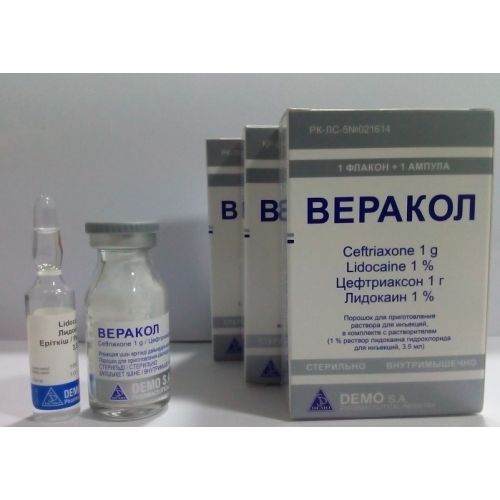
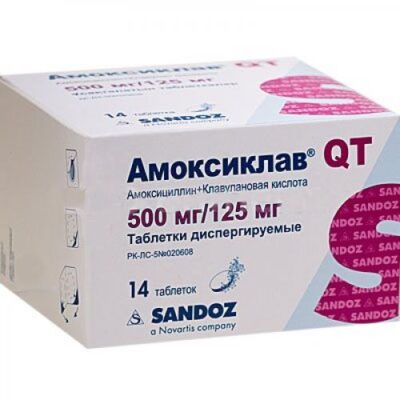
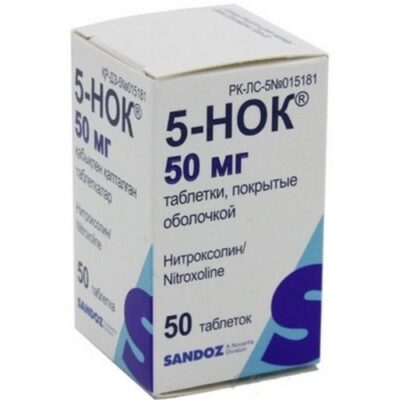
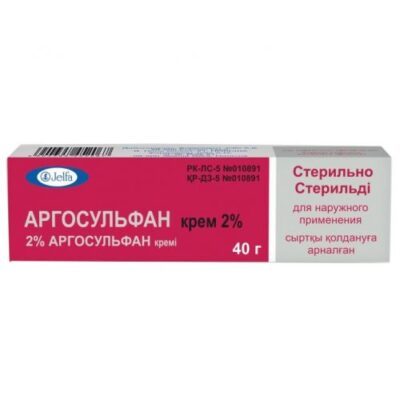
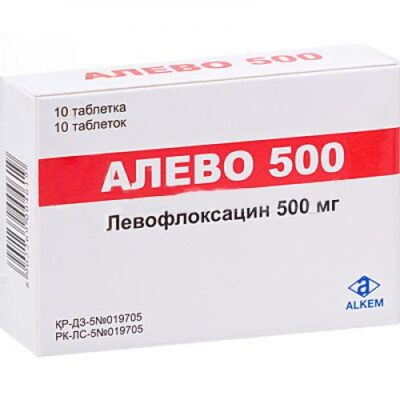
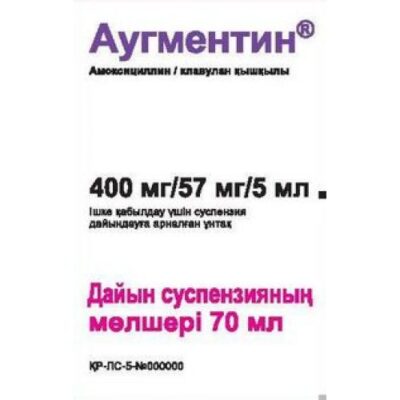
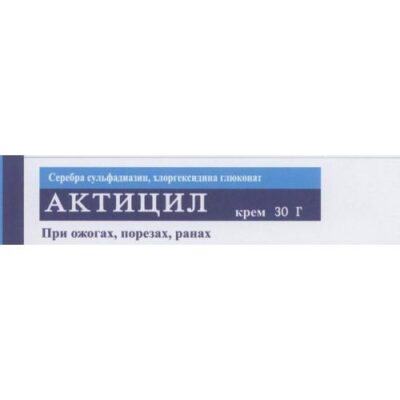
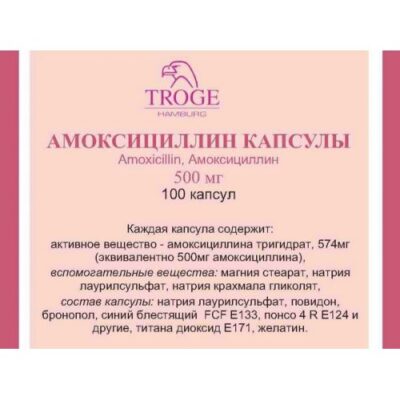
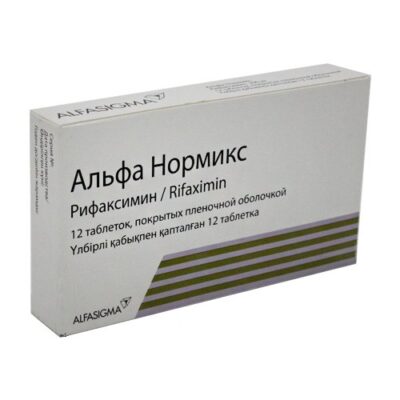
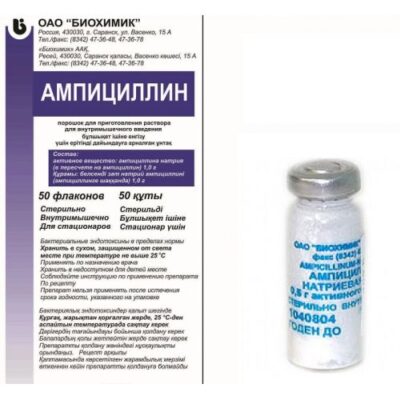
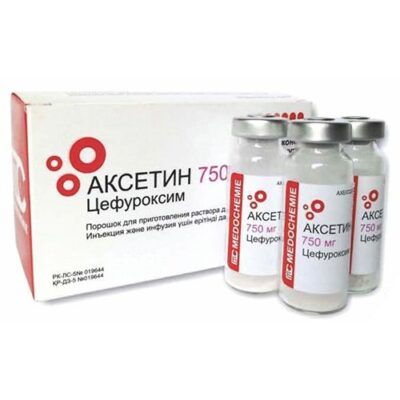






Reviews
There are no reviews yet.